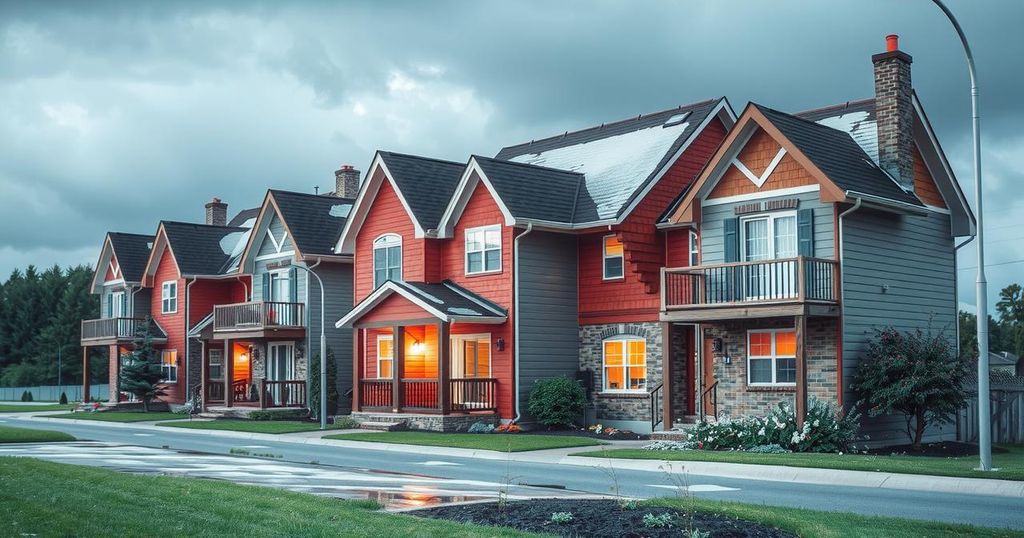The article explores how extreme weather events, exemplified by the Marshall Fire, exacerbate housing affordability issues, leading to increased housing costs and altering community demographics. The aftermath highlights the challenges faced by both homeowners and renters, particularly those from vulnerable populations, as they navigate the complexities of rebuilding amidst rising property values and rents.
In the high desert foothills of Colorado, Allison Bequette experienced a devastating wildfire, the Marshall Fire, which not only destroyed her home but also exacerbated housing affordability issues in the aftermath. The fire claimed over 1,000 structures, becoming Colorado’s costliest wildfire at over $2 billion in damages. The reconstruction efforts following the disaster led to a significant increase in housing prices, with many rebuilt homes boasting larger sizes and higher values than their original structures.
Research from Deserai Anderson Crow, a professor at the University of Colorado Denver, reveals that as communities rebuild post-disaster, they often see a rise in housing prices and property taxes, making it increasingly unaffordable for long-time residents. As a result of demand and limited supply, many residents, including Bequette, are forced away or unable to return to their neighborhoods. Homeownership becomes unattainable for many as a large portion of the affected population lacks adequate insurance coverage to rebuild.
The post-fire housing market reveals a trend where larger and fancier homes replace modest structures, further deepening inequalities within communities. Amidst soaring costs in housing, rental prices soared as well. Christina Eisert, another victim of the Marshall Fire, faced significant hurdles in securing affordable rental housing after losing her home and possessions in the fire.
Rental price spikes following natural disasters disproportionately affect vulnerable populations, as highlighted by Kelsea Best, a professor at The Ohio State University, who noted the pronounced challenges renters face due to inadequate disaster assistance. Although certain initiatives, such as the Colorado Resiliency Office, have been established to mitigate these issues and promote fair housing practices, significant work remains to ensure equitable recovery in the aftermath of disasters.
Ultimately, disasters such as the Marshall Fire reveal a pattern where housing affordability deteriorates in communities, particularly impacting those of lower economic statuses. Addressing these systemic issues necessitates both immediate and long-term solutions to restore and protect the integrity of housing in affected areas, alongside supportive policies aimed at renters and vulnerable populations.
The article discusses the broader implications of disasters and extreme weather events on housing affordability, particularly following the 2021 Marshall Fire in Colorado. It highlights the dual impact of rebuilding efforts that lead to gentrification and increased housing prices while exposing the challenges faced by the displaced population, especially renters. This perspective underscores how such events can exacerbate existing inequalities and alter community dynamics.
In summary, the aftermath of disasters like the Marshall Fire illustrates the profound impact on housing affordability, highlighting how reconstruction efforts can lead to gentrification and make communities increasingly exclusive. Vulnerable populations face heightened challenges, as disasters intensify existing inequities in housing markets. To create equitable recovery practices and protect the most affected residents, comprehensive strategies and policies are essential.
Original Source: www.cnn.com






